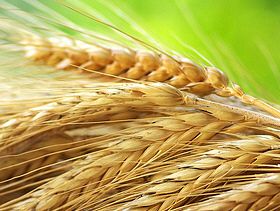 paration is currently under way for the 2014 crop. Reports indicate normal meteorological conditions, as well as normal availability of inputs.
paration is currently under way for the 2014 crop. Reports indicate normal meteorological conditions, as well as normal availability of inputs.Planting of coarse grains (mainly sorghum and millet) is expected to start from March, depending on the livelihood zone.
The 2013 cereal production was put at about 864 000 tonnes. At this level, the crop is about 5 per cent lower than previous year’s crop and some 5 per cent above the previous five-year average.
The harvest remained below the record harvest of more than a million tonnes in 2010.
In March 2012 the Government of Yemen approved the National Agriculture Sector Strategy and Investment Plan for 2012-2016.
Among the objectives in the agriculture sector are to raise domestic food production through improved input supply, increased farmer awareness, and greater availability of credit; to provide the conditions for higher income to farmers and increased rural employment to fight poverty in rural communities; to preserve environment and natural resources using community participation; and to improve marketing efficiency, decrease post-harvest losses and develop export capacities. The strategy recognises the scarcity of arable land and sustainable water management.
Slightly increased import requirements
Yemen is largely dependent on imports from international markets to satisfy its domestic consumption requirement for wheat, the main staple.
The import dependency for wheat is about 95 per cent. In the last five years, an average of 2.7 million tonnes per annum of wheat was imported commercially out of a total domestic wheat utilization of about 2.86 million tonnes. As a consequence, the country is highly vulnerable to international commodity price increases and volatility.
The import requirement for cereals in 2013 (January/December) marketing year, is forecast at about 3.75 million tonnes, about 7 per cent up on 2012.
Most of the imports is wheat (almost 3 million tonnes), with rice and maize imports forecast almost equally at some 400 000 tonnes.
The continued depreciation of the local currency against the US dollar is having a severe negative impact on the overall value of the food import bill.
The country’s capacity to import is also curtailed by the record low levels of foreign exchange reserves.





